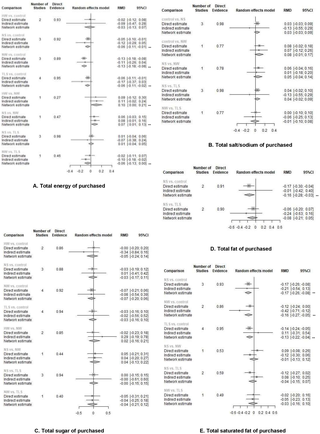A systematic review and network meta-analysis

Eight research performed in real-world settings examined the affiliation between FOPLs and gross sales of unhealthful or healthful merchandise (S7 Table). NW was linked to diminished chance of buying/deciding on of unhealthful gadgets (OR and 95% CI: 0.50 [0.34, 0.73]), whereas TLS was related to elevated chance of buying/deciding on extra healthful merchandise (1.32 [1.02, 1.72]).
When colour-coded labels and warning labels had been in contrast towards one another, we discovered that NW appeared to outperform TLS in discouraging buying unhealthful merchandise (OR and 95% CI: 0.81 [0.67, 0.98]), lowering meant buy of unhealthful merchandise (RMD and 95% CI: −0.197 [−0.352, −0.042]), and decreasing whole quantity of power bought (RMD and 95% CI: −0.064 [−0.125, −0.004]). NW was additionally noticed to carry out higher than NS in enhancing total healthfulness (RMD and 95% CI: 0.127 [0.029, 0.225]) and scale back whole power (RMD and 95% CI: −0.07 [−0.008, −0.131]) and saturated fats (RMD and 95% CI: −0.156 [−0.264, −0.049]) in procuring basket, however NS appeared to encourage the acquisition of healthful merchandise higher than NW (OR and 95% CI: 1.51 [1.08, 2.11]) (S3 Table).
Comments
0 comments